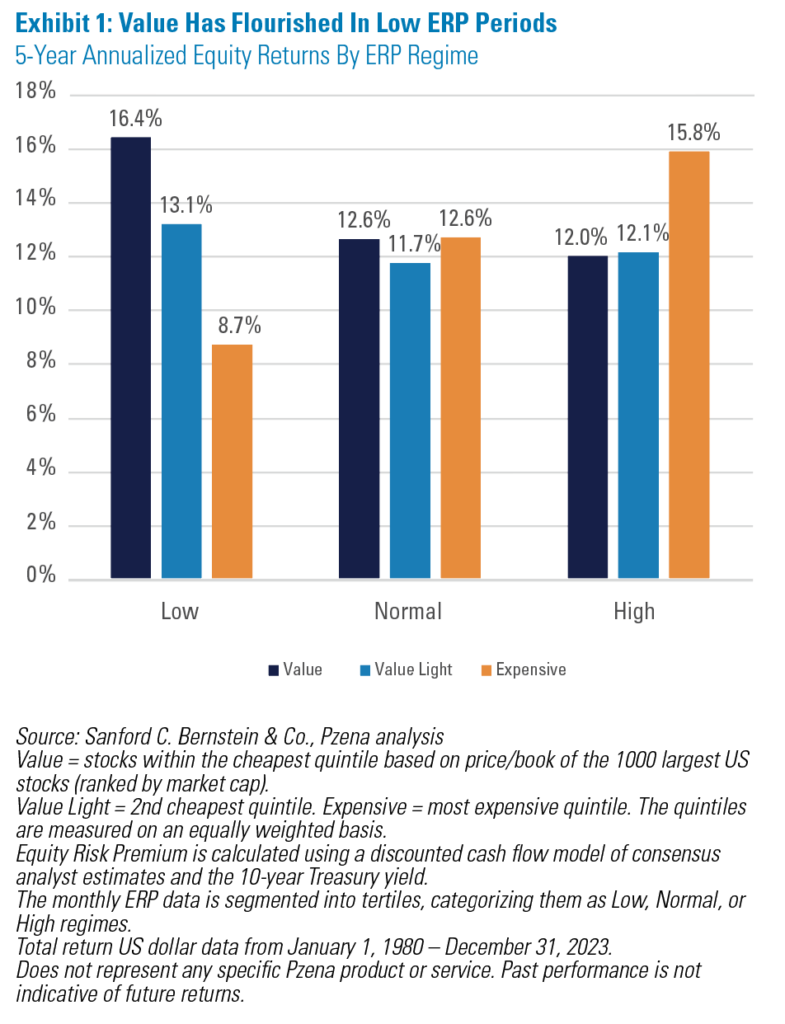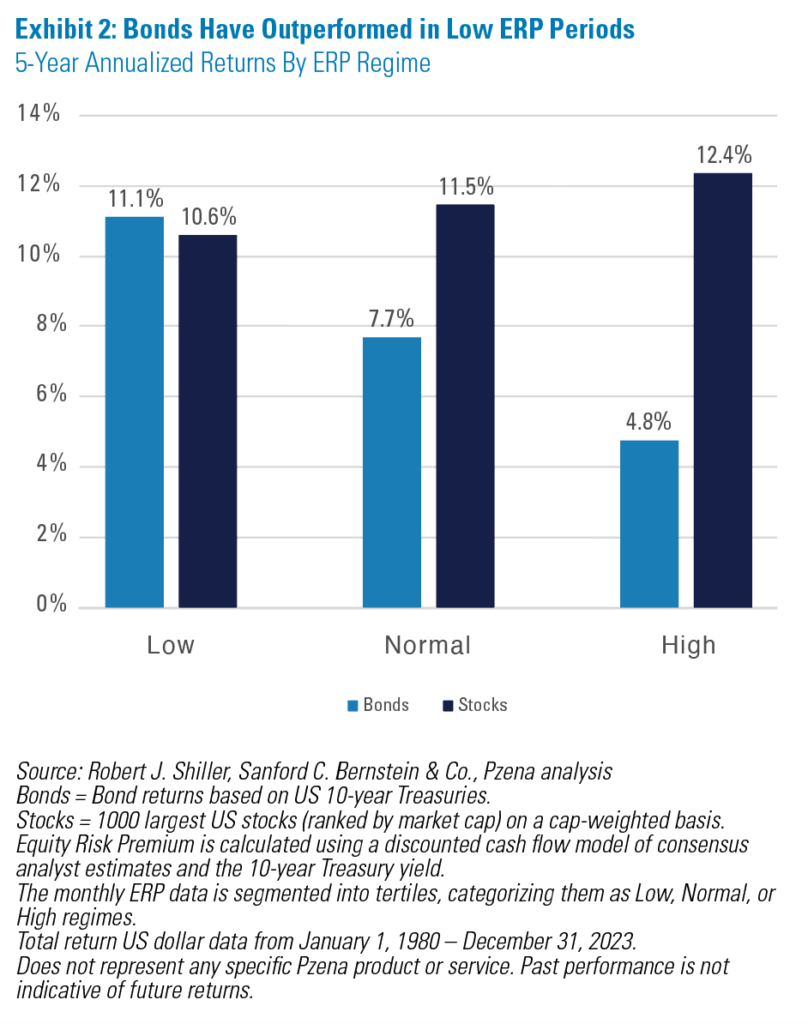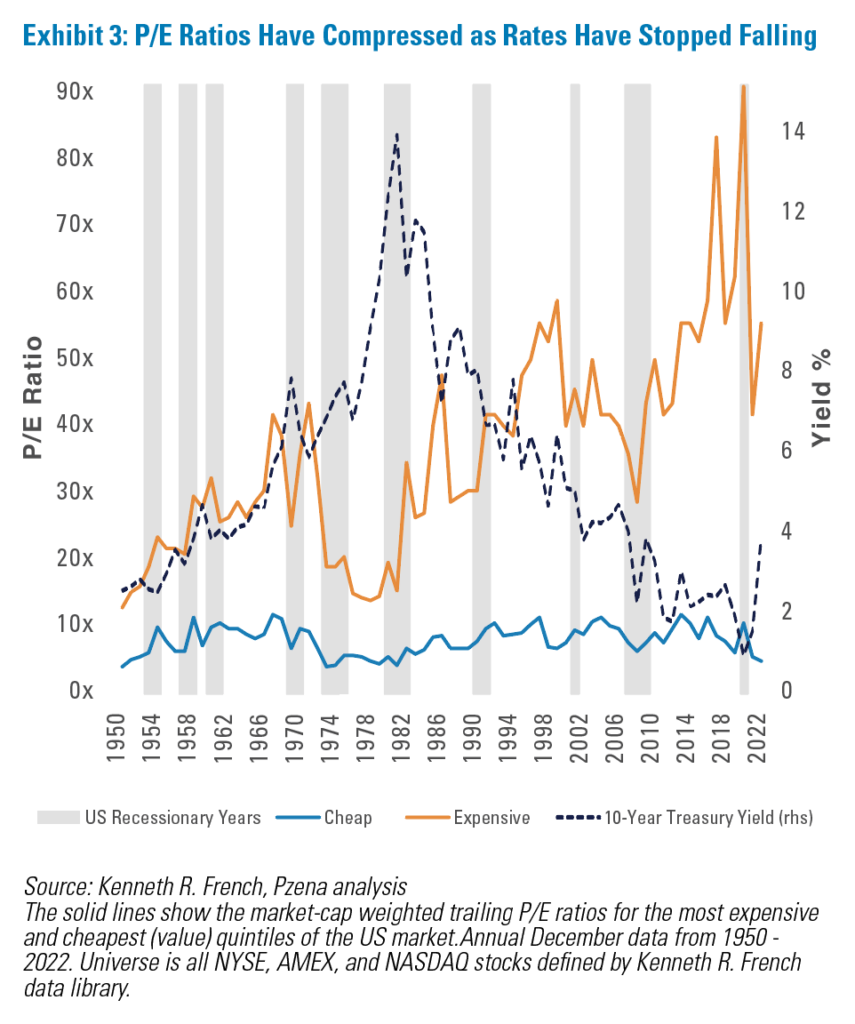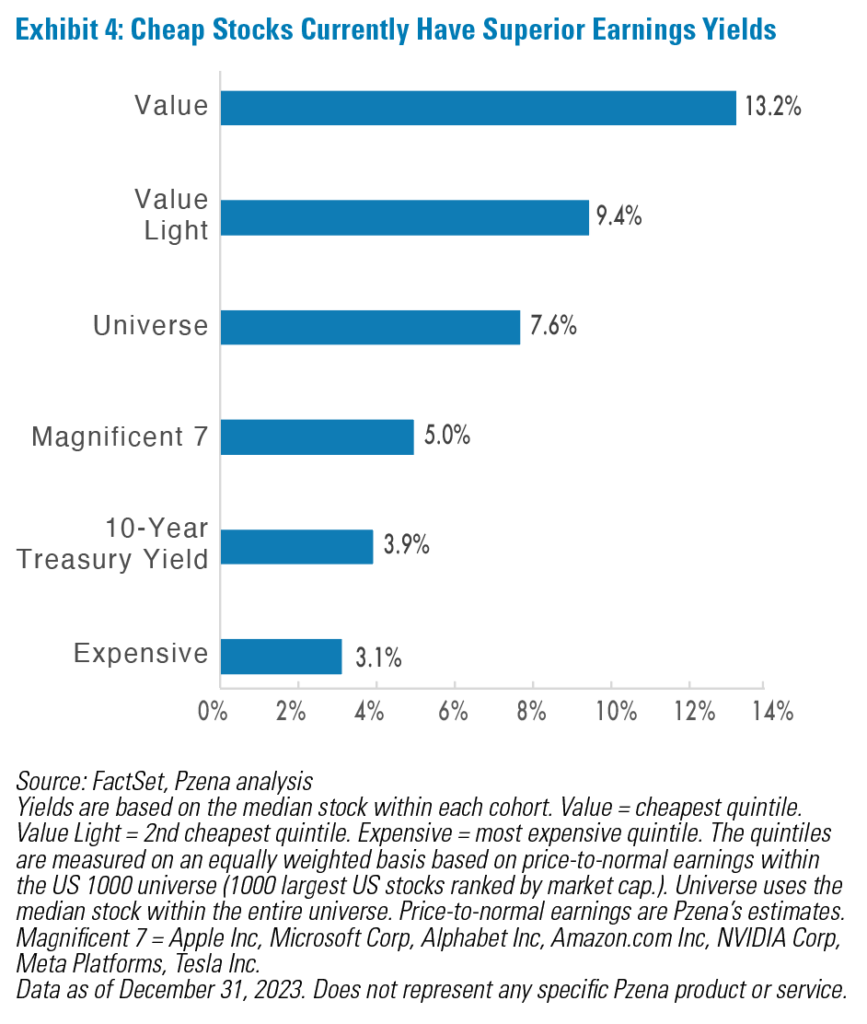Value Investing for a Low Equity Risk Premium World
Fourth Quarter 2023 Commentary
In today’s low equity risk premium environment, value stocks’ double-digit earnings yield is consistent with their historic outperformance.
Rising interest rates and elevated stock multiples, driven primarily by multiple expansion, have brought down the equity risk premium (ERP), leaving bonds more attractive relative to stocks than they have been in quite some time.
In this essay we’ll show:
- Low ERP environments have historically been advantageous for value stocks.
- Stocks overall have underperformed bonds when the ERP is low.
- Earnings yields are supportive of the current case for value.
Value Flourishes in Low Equity Risk Premium Periods
The ERP is a function of the prospective potential return for stocks relative to bonds. There are several methods for calculating the ERP. We calculate the ERP by solving for the cost of equity in a discounted cash flow model of the market, based on consensus analyst estimates, and compare that to the 10-year Treasury yield. It can vary widely from extremely low, for example in 1981, due to a modest PE for stocks versus 15% Treasury yields, to very high, such as at the depths of the global financial crisis, when bond yields were moderate, while stocks were trading at a generational low PE ratio.
As yields approached 5% in the fourth quarter, 200 basis points higher than the average over the past two decades, investors rightly asked whether the risk–reward trade-off of equities made sense, given their high-teens average multiple and low to mid-single-digit earnings yield. In other words, are stocks earning a sufficiently high ERP to justify investing in them over bonds?
Historically, during low ERP periods like today, value significantly outperformed value-light stocks1, and expensive stocks trailed both value and value-light by a wide margin (Exhibit 1).

Stocks vs. Bonds
Unsurprisingly, as ERPs come down, forward stock returns relative to bonds also generally come down. Value’s superior return when the ERP is low is even more impressive considering bonds have outperformed stocks overall by 50 basis points per year (Exhibit 2) in these periods.

The poor performance of expensive stocks is the primary driver of the tepid performance of stocks overall in these periods, as they trailed value stocks by a wide margin and even trailed bonds by 250 basis points per year.
As we have previously mentioned, the nearly 40-year decline in interest rates had an outsized impact on expensive stocks, which saw their multiples expand significantly when ERPs were higher. Meanwhile, cheap stocks have always traded in the same 7–10× earnings range, regardless of the environment for interest rates and ERPs (Exhibit 3). If interest rates once again move higher, we could see a contraction of the elevated multiple of expensive stocks, which would be consistent with the historical performance of expensive stocks in low ERP periods.

Current Earnings Yields Are Favorable to Value Stocks
For long-term investors, we believe the choice is clear. While rising interest rates have made bond yields more attractive than they’ve been for quite some time, stocks by and large still maintain earnings yields well above bonds. Value offers a significantly higher earnings yield than the universe, and is the only style offering a double-digit earnings yield, as it excludes high-flying, low-earnings-yield stocks, including the Magnificent Seven (Exhibit 4).

Conclusion
Today’s low ERP has historically been an advantageous environment for value stocks. More importantly, we believe that the far superior earnings yield for value stocks should make them an attractive addition to any portfolio.
Footnote
- Value-light stocks are the second cheapest quintile on price/book.